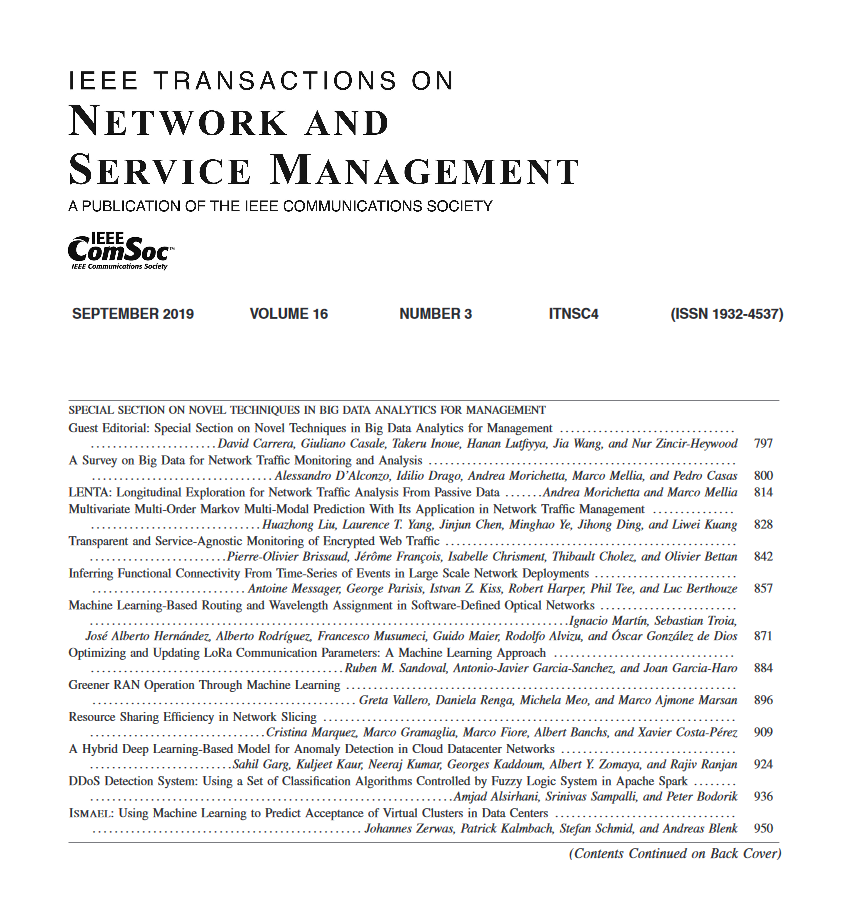Evaluation and Optimization of Backbone Network Reliability Problems Using Decision Diagram Methods
IF 4.7
2区 计算机科学
Q1 COMPUTER SCIENCE, INFORMATION SYSTEMS
IEEE Transactions on Network and Service Management
Pub Date : 2024-09-30
DOI:10.1109/TNSM.2024.3470076
引用次数: 0
Abstract
The structure of the backbone network is complex, and the characteristics of multi-layer architecture and non-independent IP layer links lead to a lack of suitable reliability assessment models and methods to evaluate the reliability of the backbone network. To this end, this paper uses decision diagram methods to model the dependency relationship between IP layer links and optical layer components, relaxing the assumption of independent network link failures. The decision diagram can logically combine features, and while retaining the original connectivity reliability and capacity reliability solution methods, it supplements the dependency relationship and inter-layer relationship of the network with subgraph merging operations. In addition, the issue of capacity reliability or business reliability for multi-terminals and all-terminals has not yet yielded a suitable solution. This paper uses the directed acyclic graph feature of the decision diagram to design a state expansion algorithm, which can be used to solve the multi-terminal capacity availability of multi-state networks. Finally, based on the easy-to-parallel characteristics of the decision diagram, parallel methods are designed to parallelize the entire process of network reliability evaluation, which can alleviate the problem of state space explosion.求助全文
约1分钟内获得全文
求助全文
来源期刊

IEEE Transactions on Network and Service Management
Computer Science-Computer Networks and Communications
CiteScore
9.30
自引率
15.10%
发文量
325
期刊介绍:
IEEE Transactions on Network and Service Management will publish (online only) peerreviewed archival quality papers that advance the state-of-the-art and practical applications of network and service management. Theoretical research contributions (presenting new concepts and techniques) and applied contributions (reporting on experiences and experiments with actual systems) will be encouraged. These transactions will focus on the key technical issues related to: Management Models, Architectures and Frameworks; Service Provisioning, Reliability and Quality Assurance; Management Functions; Enabling Technologies; Information and Communication Models; Policies; Applications and Case Studies; Emerging Technologies and Standards.
 求助内容:
求助内容: 应助结果提醒方式:
应助结果提醒方式:


